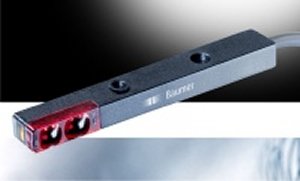Flurry of IO-Link launches hits Hannover
 The recent Hannover Fair marked the official launch for a slew of products supporting the emerging IO-Link communication technology for sensors and actuators. Developed under the auspices of Profibus International, IO-Link uses point-to-point wiring between field devices and I/O ports to carry additional data, such as process, diagnostic and configuration information. It uses parallel rather than bus wiring.
The recent Hannover Fair marked the official launch for a slew of products supporting the emerging IO-Link communication technology for sensors and actuators. Developed under the auspices of Profibus International, IO-Link uses point-to-point wiring between field devices and I/O ports to carry additional data, such as process, diagnostic and configuration information. It uses parallel rather than bus wiring.
Instead of tedious teach-in procedures, it allows parameters to be set centrally. It also provides diagnostics down to the sensor level.

Standard and IO-Link devices (often carrying the logo shown above) can be used together, making the new devices compatible with existing installations. To function, an installation needs an IO-Link master, either built into a PLC or as a standalone module.
The system can use standard, unshielded three-core cables and has a maximum transmission distance of 20m. There is a choice of three baud rates – 4.8, 38.4 or 230kb.
The IO-Link system is complementary to the serial AS-i bus system which has a master and up to 62 slaves on one cable. IO-Link provides connections between one device and one port but provides the "intelligent" information that AS-i does not. Because of its distance limitation, IO-Link will usually need to be used with a bus system.
The IO-Link system already has more than 20 supporters, including most of the big names in German automation, such as Beckhoff, Festo, Siemens, Phoenix Contact, and Wago. There are also a few non-German players – notably B&R and Schneider Electric.

One of the key supporters is Balluff, which launched several IO-Link-compatible products at Hannover. For example, it was showing IO-Link masters for both Profibus (above) and Profinet, each equipped with four IO-Link ports and four standard I/O ports which can be configured as inputs or outputs.
Balluff was also showing: sensor hubs that collect signals from eight or 16 standard sensors and make them available to a machine controller via IO-Link; an IO-link-compatible laser distance sensor aimed mainly at robotics applications, where the low weight and flexibility of the cable could be an advantage; and an inductive distance sensor which does away with the need for special cables, interface boxes and plug-in cards.

Baumer unveiled an IO-Link-compatible optical sensor with background suppression (above), which it claims is the world’s smallest. The FHDK sensor measures just 4 x 6 x 45mm and has an operating range up to 50mm.
Ifm electronic launched an optical distance sensor which transmits a switching signal only when it detects an object in a defined zone. Alternatively, it can transfer a cyclical serial analogue value, proportional to the distance reading.

